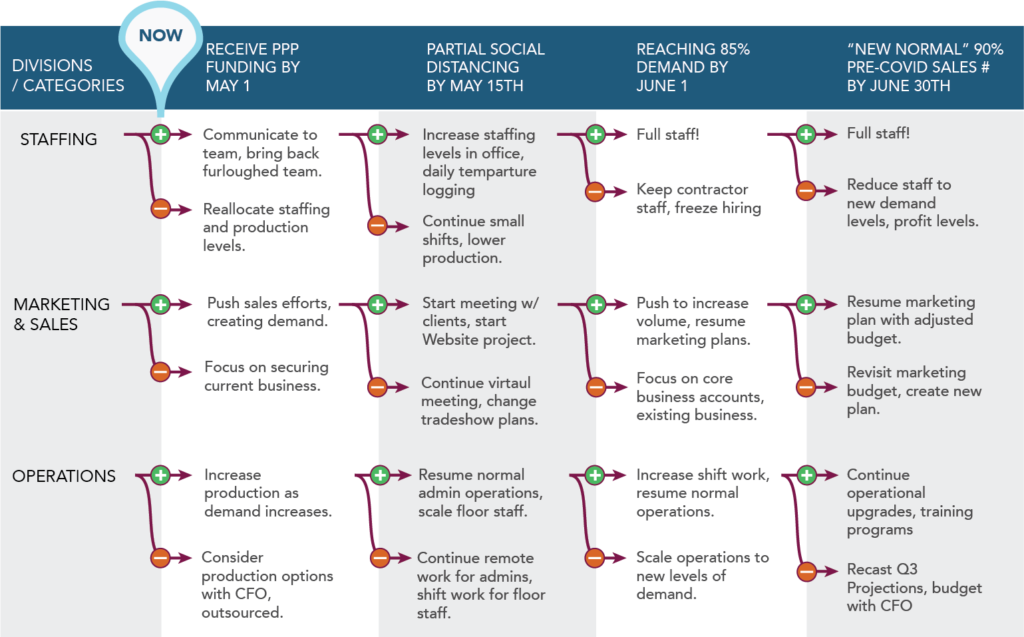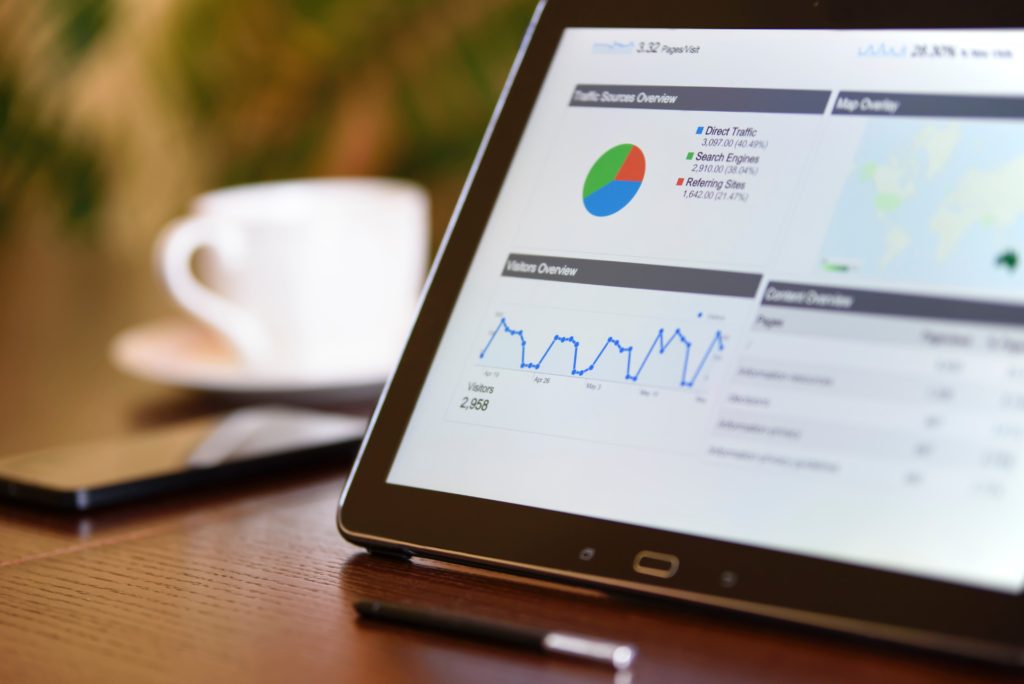When I think about the shockwave that has hit our country and economy over the past weeks, I find it hard to jump lightly into this topic. But it’s something we’ll all need to consider. What does it mean to rebuild your business? How will you reopen your work and your marketing?
Some of you are virtually unscathed, continuing to work and employing hard-working Marylanders. Yet for many of you, the past weeks may have signaled the end of a decades-old business or struck your dreams down to their knees. And as you’ve been doing day-to-day waiting, watching, stressing, pleading, negotiating, and praying – that light at the end of the tunnel might still be farther away than you’d hoped.
But there will come a time, no matter where you are in your businesses, when you will look forward to see what is on the horizon. And you will wonder how you even begin to get your business moving forward again. Rest assured that you are not alone. This consideration is on hundreds of business owners’ minds, and I want to offer up a very simple framework to help you navigate the weeks ahead as you consider how to market and reopen your business.
1. Start with what you know.
If you’re reading this article, I have to assume that you are planning to push forward to help your business thrive again. So, let’s start with what you know. The only thing we all really know is what is happening right now. Ask yourself and your team some big questions about your current situation, like:
- Why did they stop buying?
- What influenced the changes?
- What has sold in the past weeks?
- What is not selling?
- What do we know about any reasons?
- Do we have access to vendors and suppliers?
The key here is to start outlining everything you need to know about your current position. In life as in battle, the most important part of reading the map is determining where you are!

2. Make a Hypothetical Framework.
Once you know where you are, you can now start to understand what factors in your business might change over time. Here’s the truth: no one – and I mean no one – has any experience with what we are facing today. It’s a historical first for every living being in the marketplace, so we have to consider that we don’t know what will come next. But that does not mean we cannot plan and consider what could happen.
To do this, I would start on a piece of paper or a whiteboard and draw a chart like this:
- On the left column will be all the factors of your business, Suppliers, Customers, Vendors, Employees, etc. All of these have some impact into your marketing efforts.
- Then you will want to create columns for each window of time (2 week, 1 month, etc) that has some meaning for your business. It’s critical to consider what your windows might be, as things might not be as simple as just time. Here in Maryland, we have a few weeks until we reach any of the “Reopen America” phases, as, at the time of my writing, we have yet to peak. You might use the US Guidelines, you might use the Presidential Phases as decision points. But what these windows do is help you foresee the points when you’ll need to make decisions, rather than waiting until changes hit you.
- Now, you can start putting all of your best thinking and forecasting toward what might be coming at those stages. Ask yourself this question: What will we do if this happens/ doesn’t happen? Don’t overdo it, but fill in your answers in the chart with as much detail as needed for you to think through each possibility.
I’ve done a simple example below to show what I am thinking. Gather your team, start thinking about these plans to mark how the areas of your business could follow the critical “gates” as they open for your business. Think of what would happen if all goes well (+) or if it does not happen (-), and craft your best plan for each scenario.

3. Keep It Posted and Review It Often
Take this whiteboard or sketch and keep it in your meeting room, boardroom, or work-from-home room so that you can adapt it as the markets and world change. Erase, change, improvise, and update this chart as frequently as makes sense. This is meant to be a framework to think about the decisions you might have to make before you have to make them. This way, you can be more aware of the situation and have time to use your team’s good thinking instead of being forced into reactive thinking.
This works especially well when you are thinking about your customer and reacting to the demand in the marketplace. If your business has dried up, you can think about how you might scale back up, or you can think about how you might change your business model if things never come back. Don’t be afraid to go as far as closing your business if that is just what makes sense. It will be easier to do it on paper now than it will be to do it after nothing goes right and your emotions are running high. Waiting until that moment to make your decision could lead to more harm than good.
4. Digging Deeper into Marketing
Most of this article has been on addressing the big picture and planning for the resurgence of your business in all categories. Yet I want to walk deeper with you into the marketing row, and I want to give you some more pointed advice.
You can’t overcommunicate. For many of you without marketing departments, you’ve been messaging in a triage fashion, communicating only what needed to be said. Your customers want to know how you are doing and what they can do to help. There is no better time to be human, share the struggles and challenges, as well as the victories.
You will need to spend money to capture audience. Money is tight, yet even a small budget on paid advertising can help drive business around what you are already doing. If feels counter-intuitive, but you might need to spend money to get sales right now. But only focus on what is selling now and can be bought now. What can literally be sold right now and promote that as your first step. Then as the market returns you can expand that line of thinking to your overall products and services. This will follow the chart above. Plan to put a lot of energy and time into marketing yourself again in the coming months.

Talk to your customers, innovate as necessary. This entire pandemic will be marked as one where innovative companies rode out of the flames to see another day. Talk to your customers and see how even a slight change to your product or service could help move more product. As a customer-centric business this can be easy. Don’t assume you’ll be selling the same product the same way from today going forward.
5. Be Encouraged
As the old axiom goes, “Smooth seas don’t make good sailors.” As an entrepreneur, you were built for times like these. These are the wind-blasted, teeth-gritting, white-knuckle moments that true entrepreneurism thrives upon. What’s behind you is done, what lies ahead is going to be the result of your leadership, vision, and planning through the turbulent seas. I hope this framework gives you a clean slate to start thinking about your comeback and a method to craft your rise back to victory.
This community is here for you, and we wish you well.
 Tobin Lehman is the lead strategist at New North, a digital agency focused on helping experts market their expertise. He focuses his writing on topics around marketing, sales and creating value from your expertise.
Tobin Lehman is the lead strategist at New North, a digital agency focused on helping experts market their expertise. He focuses his writing on topics around marketing, sales and creating value from your expertise.
Frederick Chamber Insights is a news outlet of the Frederick County Chamber of Commerce. For more information about membership, programs and initiatives, please visit our website.

